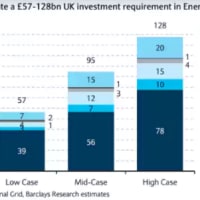Scientists on brink of HIV cure
(HIV治療完成目前?)
By Jake Wallis Simons
Telegraph: 6:30PM BST 27 Apr 2013


(HIV治療完成目前?)
By Jake Wallis Simons
Telegraph: 6:30PM BST 27 Apr 2013
Researchers believe that there will be a breakthrough in finding a cure for HIV "within months".
研究者等は、HIVの治療法開発で「数か月以内」にブレークスルーがあると考えています。
Danish scientists are expecting results that will show that "finding a mass-distributable and affordable cure to HIV is possible".
デンマークの科学者等は、「大量配布と低価格なHIV治療の発見は可能である」ことを示す研究結果を待っています。
They are conducting clinical trials to test a "novel strategy" in which the HIV virus is stripped from human DNA and destroyed permanently by the immune system.
彼らは、HIVウイルスをヒトのDNAから引き剥がして、免疫システムによって恒久的に破壊するという「新戦略」を試す治験を実施しています。
The move would represent a dramatic step forward in the attempt to find a cure for the virus, which causes Aids.
この動きは、エイズを発症するHIVウイルスの治療法の研究を飛躍的に前進させると思われます。
The scientists are currently conducting human trials on their treatment, in the hope of proving that it is effective. It has already been found to work in laboratory tests.
科学者等は現在、この方法の効果が証明されることを期待して、ヒトでの治験を行っています。
既にラボでの実験では効果があることが確認されています。
The technique involves releasing the HIV virus from "reservoirs" it forms in DNA cells, bringing it to the surface of the cells. Once it comes to the surface, the body's natural immune system can kill the virus through being boosted by a "vaccine".
このテクニックでは、HIVウイルスがDNAセルの中に形成する「貯蔵庫」からHIVウイルスを出して、セルの表面に移動させます。
ウイルスが表面に出てくると、「ワクチン」で強化された身体の免疫システムはウイルスを殺すことが出来ます。
In vitro studies - those that use human cells in a laboratory - of the new technique proved so successful that in January, the Danish Research Council awarded the team 12 million Danish kroner (£1.5 million) to pursue their findings in clinical trials with human subjects.
1月には、ヒトの細胞を用いたラボでの生体外実験で、この新手法の成功が証明され、デンマーク研究評議会はヒトを対象とする治験を行うための賞金、150万ポンドを贈りました。
These are now under way, and according to Dr Sogaard, the early signs are "promising".
治験は現在進行中であり、Sogaard博士によれば、初期段階での兆しは「期待が持てる」ものだそうです。
Dr Ole Sogaard, a senior researcher at the Aarhus University Hospital in Denmark who is part of the research team, said: "I am almost certain that we will be successful in releasing the reservoirs of HIV.
デンマークのオールフス大学病院のシニア・リサーチャー、Ole Sogaard博士も研究チームの一員ですが、次のように語っています。
「HIV貯蔵庫から出すことに成功するとほぼ確信している」
"The challenge will be getting the patients' immune system to recognise the virus and destroy it. This depends on the strength and sensitivity of individual immune systems."
「問題は、患者の免疫システムにウイルスを認識、破壊させることだろう。これは各個人の免疫システムの強さと敏感さに左右される」
Fifteen patients are currently taking part in the trials, and if they are found to have successfully been cured of HIV, the "cure" will be tested on a wider scale.
治験に参加する患者は15名で、彼らが治った場合、この「治療法」はより大規模な治験に進みます。
Dr Sogaard stressed that a cure is not the same as a preventative vaccine, and that raising awareness of unsafe behaviour, including unprotected sex and sharing needles, remains of paramount importance in combating HIV.
Sogaard博士は、この治療法は予防ワクチンとは異なること、そして無防備な性行為や注射針の共有など、危険な行動への注意を喚起することが最も重要なHIV対策であることには変わりないことを強調しました。
With modern HIV treatment, a patient can live an almost normal life, even into old age, with limited side effects.
現在のHIV治療により、患者はほぼ通常の生活を送ることが可能であり、老齢まで生きることも可能で、副作用も限定的です。
However, if medication is stopped, HIV reservoirs become active and start to produce more of the virus, meaning that symptoms can reappear within two weeks.
しかし、薬の服用を止めると、HIV貯蔵庫が活性化してウイルスを増加させ、2週間以内に症状が再発します。
Finding a cure would free a patient from the need to take continuous HIV medication, and save health services billions of pounds.
治療法を発見すれば、患者は継続的にHIV薬を服用する必要がなくなり、数十億ポンドの医療費を節約することが出来ます。
The technique is being researched in Britain, but studies have not yet moved on to the clinical trial stage. Five universities - Oxford, Cambridge, Imperial College, London, University College, London and King's College, London - have jointly formed the Collaborative HIV Eradication of Reservoirs UK Biomedical Research Centre group (CHERUB), which is dedicated to finding an HIV cure.
この技術は英国で研究中ですが、治験段階には至っていません。
オックスフォード大学、ケンブリッジ大学、ロンドン大学インペリアル・カレッジ、ロンドン大学ユニバーシティ・カレッジ、ロンドン大学キングス・カレッジの5大学は合同で研究グループを立ち上げています。
They have applied to the Medical Research Council for funding to conduct clinical trials, which will seek to combine techniques to release the reservoirs of HIV with immunotherapy to destroy the virus.
彼らは、HIV貯蔵庫の解放と、HIVウイルスを破壊する免疫療法の技術を組み合わせることを目指す、治験実施の資金を英国医学研究会議に申請しました。
In addition, they are focusing on patients that have only recently been infected, as they believe this will improve chances of a cure. The group hopes to receive a funding decision in May.
更に、これによって治癒の可能性は高まると考えて、最近感染したばかりの患者に注目しています。
同グループは、5月に資金供与の決定が下されることを期待しています。
"When the first patient is cured in this way it will be a spectacular moment," says Dr John Frater, a clinical research fellow at the Nuffield School of Medicine, Oxford University, and a member of the CHERUB group.
「この方法で完治する患者が最初に出た時は、素晴らしい瞬間だろう」とオックスフォード大学ナットフィールド医学校のクリニカルリサーチ・フェローでCHERUBのメンバーである、ジョン・フレイター博士は言います。
"It will prove that we are heading in the right direction and demonstrate that a cure is possible. But I think it will be five years before we see a cure that can be offered on a large scale."
「我々は正しい方向に向かっており、治癒は可能だと証明するだろう。しかし、大規模に治療を提供出来るようになるまで、あと5年はかかると思う」
The Danish team's research is among the most advanced and fast moving in the world, as that they have streamlined the process of putting the latest basic science discoveries into clinical testing.
デンマークの研究チームによる実験は、最新の基礎科学の発見を治験に導入するプロセスをスリム化しているので、世界最先端であり急速に進んでいます。
This means that researchers can progress more quickly to clinical trials, accelerating the process and reaching reliable results sooner than many others.
これは、研究者等がより迅速に治験を進められ、プロセスを加速し、信頼出来る結果をその他多くの治験よりも速く出せることを意味しています。
The technique uses drugs called HDAC Inhibitors, which are more commonly used in treating cancer, to drive out the HIV from a patient's DNA. The Danish researchers are using a particularly powerful type of HDAC inhibitor called Panobinostat.
このテクニックは、患者のDNAからHIVを放出するために、HDAC阻害剤という医薬品を用いていますが、これはより一般的には癌治療に使われています。
デンマークの研究者等は、パノビノスタットという特に強力なHDAC阻害剤を使っています。
Five years ago, the general consensus was that HIV could not be cured. But then Timothy Ray Brown, an HIV sufferer - who has become known in the field as the Berlin Patient - developed leukaemia.
5年前、HIVは治癒不可能だと一般的に考えられていました。
しかしその後、HIV患者のティモシー・レイ・ブラウンさんが白血病を発症しました。
He had a bone marrow transplant from a donor with a rare genetic mutation that made his cells resistant to HIV. As a result, in 2007 Mr Brown became the first man to ever be fully cured of the disease.
ブラウンさんは、細胞にHIVウイルスへの抵抗力を持たせる、珍しい遺伝子変異のあるドナーの骨髄を移植されました。
その結果、2007年、ブラウンさんはHIVを完治した最初の人物となりました。
Replicating this procedure on a mass scale is impossible. Nevertheless, the Brown case caused a sea change in research, with scientists focusing on finding a cure as well as suppressing the symptoms.
このプロセスを大規模に繰り返すことは不可能です。
しかし、ブラウンさんのケースは研究に大きな変化をもたらし、科学者等は治療の発見と症状の抑制に集中するようになりました。
Two principal approaches are currently being pursued. The first, gene therapy, aims to make a patient's immune system resistant to HIV. This is complex and expensive, and not easily transferrable to diverse gene pools around the world.
現在、研究が進んでいるアプローチは主に2つあります。
1つ目は遺伝子治療で、患者の免疫システムにHIV耐性を持たせることを目指しています。
これは複雑かつ効果であり、世界中の多様な遺伝子プールに転換するのは容易ではありません。
The second approach is the one being pursued by Dr Sogaard and his colleagues in Denmark, the CHERUB group in Britain, and by other laboratories in the United States and Europe.
2つ目のアプローチは、デンマークのSogaard博士とチーム、英国のCHERUBグループ、そして米国と欧州にある研究所が研究を進めています。




















